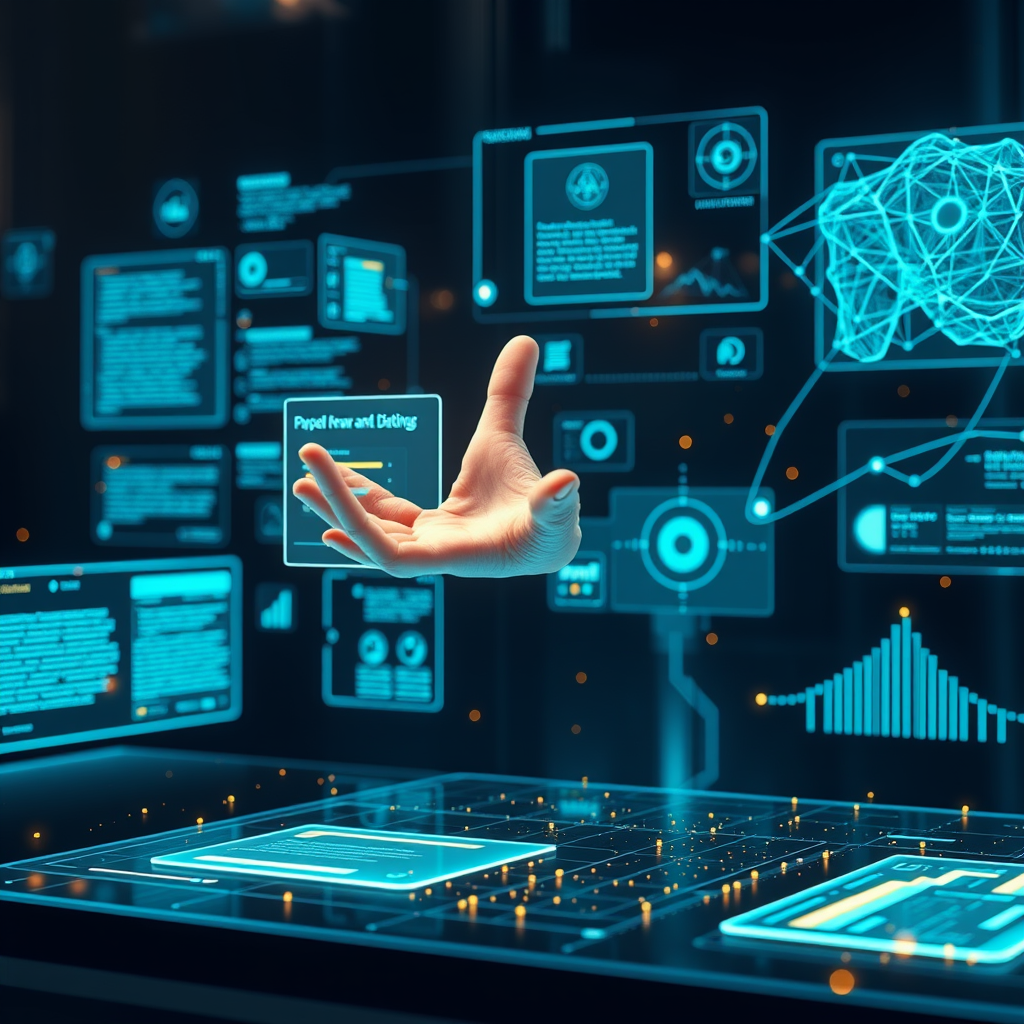
Introduction
The way we interact with computers has been largely defined by a set of rigid conventions: menus, command lines, and a fixed set of icons that never change. Over the past few decades, designers have refined these interfaces, but the core interaction model has remained static. NeuralOS proposes a radical departure from this paradigm by embedding large language models (LLMs) and multimodal AI directly into the operating system’s core. Instead of a passive shell that merely executes commands, NeuralOS becomes an active collaborator that anticipates user intent, reorganizes itself around current tasks, and learns from long‑term usage patterns. This dynamic reimagining of the OS surface layer promises to reduce the friction that often accompanies the adoption of new software, making powerful tools accessible to a broader audience. By treating the interface as a living, evolving entity, NeuralOS shifts the burden of adaptation from the user to the machine, allowing people to focus on creative and productive work rather than memorizing shortcuts.
Main Content
The Generative Engine Behind NeuralOS
At the heart of NeuralOS lies a generative AI engine that synthesizes interface elements in real time. Traditional operating systems rely on pre‑designed widgets and static layouts; NeuralOS, on the other hand, uses an LLM trained on millions of user interactions to predict which tools a user will need next. The model ingests contextual signals—such as the current document type, the time of day, and even biometric data like eye‑tracking patterns—to generate a personalized workspace. This process is analogous to how a seasoned colleague might rearrange a desk to suit a particular project, but the AI does it instantaneously and without the need for manual configuration.
Dynamic Interface Generation
One of the most striking features of NeuralOS is its ability to generate interfaces on the fly. Rather than presenting a fixed set of icons, the system surfaces only the controls that are relevant to the task at hand. For example, while editing a spreadsheet, the AI might display advanced data‑analysis tools, while a word‑processing session would prioritize formatting and collaboration features. This selective exposure reduces visual clutter and cognitive load, allowing users to concentrate on content rather than navigation. Moreover, the interface can morph across devices; a laptop running NeuralOS might present a compact toolbar, whereas a tablet version could expand into a gesture‑based control panel, all without user intervention.
Accessibility and Cognitive Load
NeuralOS’s adaptive nature has profound implications for digital accessibility. Traditional interfaces often require users to learn a complex hierarchy of commands, which can be a barrier for the elderly, children, or individuals with cognitive or motor impairments. By continuously learning a user’s habits and preferences, NeuralOS can present the most intuitive controls, effectively lowering the learning curve. For instance, a user with limited dexterity might benefit from larger, voice‑activated widgets that the AI surfaces automatically when it detects frequent use. The system’s context awareness also means that it can anticipate the need for accessibility features before the user explicitly requests them, creating a smoother, more inclusive experience.
Enterprise and Consumer Implications
In the enterprise realm, NeuralOS could streamline workflows across departments by generating unified interfaces that adapt to each team’s specific needs. A marketing team might see a dashboard that automatically pulls in analytics, while a software development squad could be presented with code‑review tools and version‑control shortcuts. Because the OS learns from collective usage patterns, it can suggest cross‑departmental integrations that a human designer might overlook. On the consumer side, smartphones and personal computers equipped with NeuralOS could become context‑aware companions that anticipate user needs—such as offering a quick access to a navigation app when a user is about to leave home, or suggesting a music playlist when the user starts a workout.
Future Horizons: Emotional Intelligence and Predictive Interaction
Looking ahead, NeuralOS could evolve beyond functional adaptation to incorporate emotional intelligence. By integrating real‑time biometric feedback—heart rate variability, facial expression analysis, or even voice tone—the system could detect stress or frustration and adjust the interface accordingly. Imagine a scenario where the AI simplifies the UI when it senses that a user is overwhelmed, or offers a calming background theme during a high‑pressure task. Predictive capabilities could also become more sophisticated, allowing the OS to pre‑load resources or pre‑configure settings before the user even initiates a task. These advancements would bring us closer to a truly symbiotic relationship between humans and machines.
Conclusion
NeuralOS represents more than a technical upgrade; it is a philosophical shift in how we conceive of computing environments. By turning the operating system into an adaptive, generative partner, it challenges the long‑standing expectation that users must conform to machine logic. Instead, the machine learns to anticipate and accommodate human intent, reducing barriers to entry and unlocking new levels of productivity. As the technology matures, we can expect to see its influence ripple across both consumer and enterprise landscapes, redefining the very fabric of digital interaction.
Call to Action
If you’re intrigued by the prospect of an OS that learns and evolves with you, consider exploring early prototypes or participating in beta programs that focus on adaptive interfaces. Share your thoughts on how such technology could reshape your daily workflow or improve accessibility for those who struggle with conventional systems. Engage with the community, provide feedback, and help shape the future of human‑computer interaction—because the next generation of operating systems will not just respond to commands; they will understand the people behind them.
